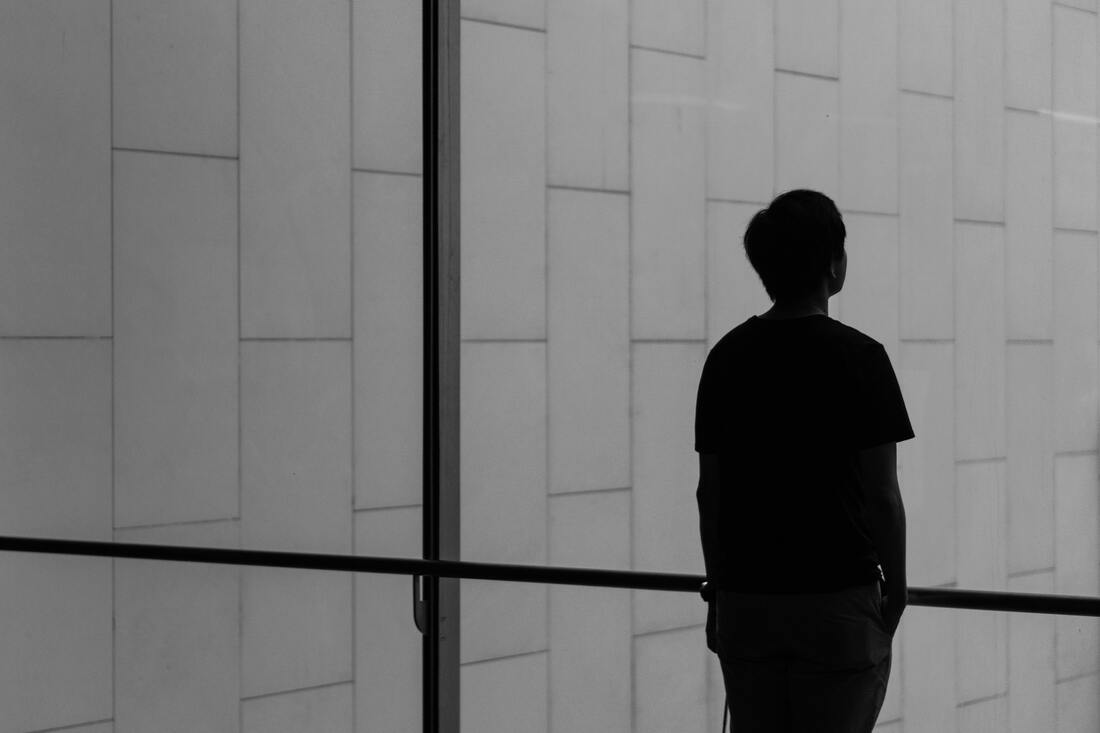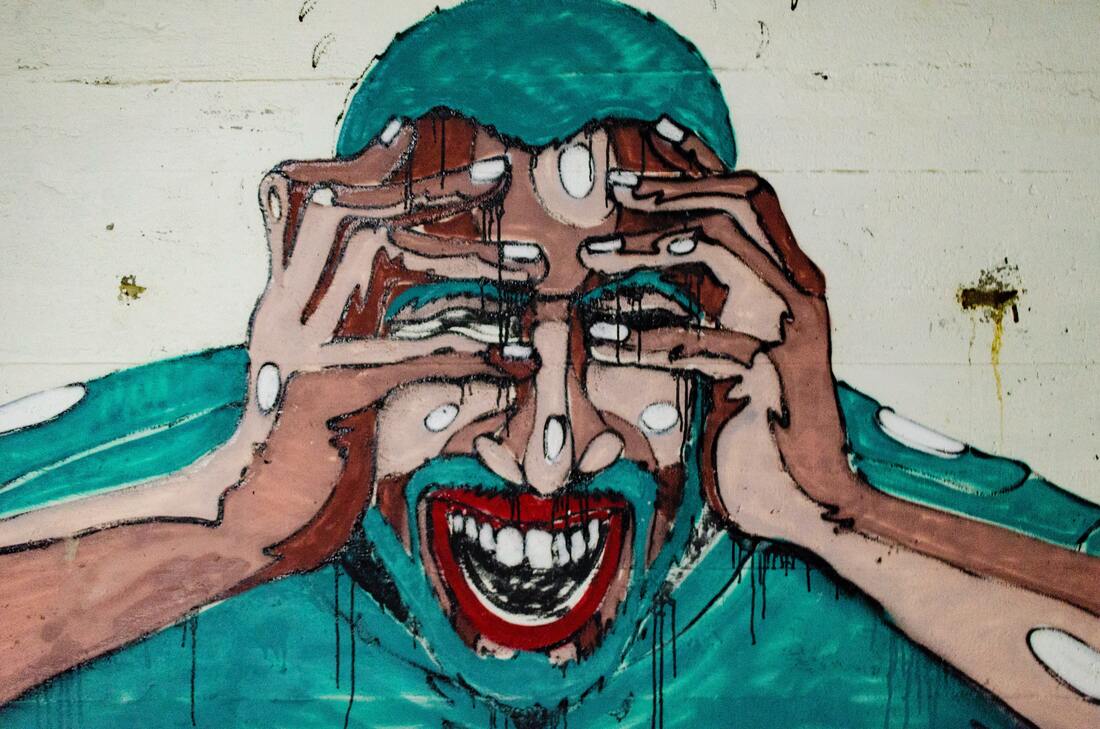|
Photo by Zhu Liang According to recent research by McKinsey, 83% of leaders think they are unprepared for their new roles. That fully reflects my own observations. Organisations assume leaders are born, not made, and often make very little effort to help people understand what is required of them and how to shine in a new role.
All of the following mistakes come from not recognising that you need to adapt your tactics - either with yourself or others - when you take on more responsibility:
1 Comment
Photo by Hello I'm Nik Impostor syndrome, where people perpetually worry that they are not deserving of the success and recognition they have enjoyed and expect to be “found out” and exposed, was originally recognised in the late 70’s. It can appear in all areas of our lives and at any point in our lives as well. I have an extremely elderly relative who was told that they were in “amazing” health by their doctor who was troubled by the fact that it could not be true as he also experienced some aches and pains. And, if you have experienced this, you are in great company! Maya Angelou, Tom Hanks and Michelle Obama have all shared that they too have suffered with it. My guess is that its a sign that you care about what you are doing and want to do it very well. At least you aren’t suffering Dunning–Kruger delusions, where you think you are better at something than you actually are! There are a number of things you can do to overcome impostor syndrome. Here are three: 1. Celebrate your successes Apparently we are hardwired to pay more attention to negative events than positive ones. Its called negativity bias and it causes us to let bad experiences overshadow good ones and let them influence our future decisions. It’s assumed this is part of our survival toolkit, where remembering what danger looks and sounds like was a prerequisite to remaining alive in primitive times. A good exercise for this is to look back over your whole life and map out your success timeline. It needs to include every success, from a childhood sporting trophy to nailing a challenging deadline at work. Get it all in there and, if you can, ask friends and family to fill in the gaps. Then just soak it up. Spend time revisiting all the great things you have done and really enjoy each and every triumph. For a regular confidence boost, schedule in some time, ideally weekly, where you remind yourself of three things that went well over the last 7 days. 2. Take stock Maybe its time to to assess yourself objectively, so you are clearer about what you are really goo AND bad at. None of us are perfect and acknowledging what you actually aren’t good at can help put things into perspective and help you see where you may need to shore things up to leave you feeling less exposed. A personal SWOT analysis is a great tool for this. I'm clearly a big fan of this tool. I mentioned it in the last post, too!
3. Reframe it
Is there another way to tell the story that you’ve been telling yourself? Let's say you feel that you don’t share the same background or went to a less prestigious university than your peers, you might benefit from reminding yourself that you bring fresh and diverse thinking that they can not offer. Same with not being the same age - your lack or abundance of life experience again offers a new perspective that your competitors lack. Getting in the habit of challenging yourself to tell a negative story in a positive light is a great habit to get into . It may help to make it into a game: how could you retell it so that it sounds like an absolute win? Celebrities and politicians do it all the time. So can you! Its time to banish impostor syndrome from our lives. If any of these approaches work for you, please let us know in the comments - so that others get inspired to try them! Photo by Noah Näf There are many points in a persons career where finding a job seems absolutely impossible: at the beginning, it feels like you are trapped in the can’t-get-a-job-until-you’ve-had-a-job catch-22 cycle, whenever you want to do something different like change career or refocus, and then at around 50 when it seems no one wants to hire an”older person”. Essentially, we live in a world that makes a lot of assumptions about people formed around basic demographics that really need to be exposed and refuted!
Hiring managers often believe that
Here are three suggestions for persuading potential employers to see your potential:
Photo by Maren Wilczek Some people seem to have a very clear vision of where they are going and where they want to get to in life. Whether or not they make it seems to be less important than having an end point to aim for. In contrast, many people don’t have a clear set of goals and find the idea of creating them quite daunting. For the people in the second camp, they often slowly get a sense that they are failing to achieve their potential. And, I find, this can lead to a negative spiral, a catch-22, where you never know if you are on track if you have no clear destination.
Richard Boyatzis, an expert on intentional change says that “we become what we dream” and that in order to do that, we need to be clear about who we wish to be and what we want to achieve in our lives. He is fully aware of how overwhelming it is to allow ourselves to dream and has come up with a series of tools that shift out out of the negative spiral and open up the creative side of our mind. There is one thing I'd recommend doing - one of Boyatzis' “Dreams of the Ideal Future” exercises - that can be very effective at helping with this. It’s also very simple. You just need to list 27 or more things you’d like to do or experience before you die. I would encourage everyone to have a go. You may not get to 27, and that’s OK. Its less about specifics (e.g. places you’d like to visit) and more about experiences (e.g. go for a walk with a future grandchild or give a speech at your child’s wedding). It may help to explore what you would have liked to have achieved at different future life milestones, like having gone skydiving by your 75th birthday or climbed Mount Everest by the time you are 50. I really encourage you to play with this. Time is a curious quality and most people don’t have a good sense of how quickly it passes, especially when you are focussed on other things. My vision for the future is to help people find their happy path in life and at work because being unhappy is just a sign that something needs to change! And if you want some help with seeing your future more clearly, give me a shout. McKee, Boyatzis and Johnston, Becoming a Resonant Leader: Develop Your Emotional Intelligence, Renew Your Relationships, and Sustain Your Effectiveness, Harvard Business School Press, Boston, Mass. 2008 Photo by JC Gellidon There are a lot of myths and legends about work, how it works and how do survive and thrive while you are there. Some of them seem more true than others but, to be honest, they are all contextual because it depends on the culture of the place you are in. What goes in one office is totally taboo in another. Whats incredible is how much these “rules” guide us and often make us very unhappy in the process. Over the years, I have encountered plenty of them, but here are 5 particularly damaging ones:
Success means having to climb the career ladder This is something society pushes at us quite hard. It is also reinforced by going to school where we are rewarded for doing well and at the end of each year, we take a step up the ladder. By the time people get to work, this pattern is very established in our minds. The truth is, not everyone wants to or is a position to get to the “top” and sometimes it is hard admit to - either just to ourselves or in public. I often coach people who have very mixed feelings about where to go next in their careers because of this type of belief. I need to make an amazing impression all the time. This is a really dangerous one. Yes, avoiding mistakes, from terrible career bloopers to typos, is 100% recommended, but the fear of making mistakes can be so inhibiting, it can lead to nothing getting done at all. I talk to people who lose sleep, family and holiday time because they feel the need to make every output, every email, every presentation into a work of art. Whats needed here is some perspective: how much does it matter? Is the extra effort worth it? For this second question, I’d challenge you to find evidence to back your answer. I know people who spend days scouring the internet for perfect images for presentations, which is lovely of course, but makes no difference to anyone in the big scheme of things. The big question for this situation is “is it really worth it?” And if it isn’t a resounding Yes” then its time to make your peace with good enough! Saying “no” is a career killer! This is a myth I certainly bought into in the past. I would say “yes” to anything because I thought saying “no” would totally scupper my career. I eventually learned that if you say “yes” to too many things, you just get asked to do more and more until you are so overwhelmed you start malfunctioning. And, it turns out that saying yes to something you later are unable to deliver on is the career killer, not saying no! It took me a long time to learn that one! A great way of managing your workload is to be open abut your other commitments and get feedback on priorities before you make a decision about picking up or dropping tasks. Asking for help makes you look stupid/incompetent This, to be honest, can be a cultural issue. I have worked in places where it was obvious that if you admitted you could do with a bit of support somehow indelibly marred your track record forevermore. Ugh! The worst thing is that not getting help when you need it can be more damaging - for the person and for the organisation. The individual gets discouraged and is likely to start to be less effective and that impacts on the organisation because its needs are being served less optimally. Sometimes, its just easiest to do it myself This is a killer.Learning to trust others, to give guidance when needed and then stand back and let them get on with it can feel very exhausting and scary. The big fear is that they won’t do a great job and it will reflect badly on everyone. Which leads us to think that we’ll only have to re-work their efforts later, so why not do it now? That may make sense in the sort term but it’s also a terrible trap. Because you are not letting them learn how to help you, you set up a scenario where you can never step away from the tasks you always do in order to take on new challenges and grow new skills yourself. Over time, you will start to feel weighed down by the burden of all the tasks you are responsible for and maybe you will notice that your less encumbered colleagues are making better career progress than you are! So, it’s very well worth challenging ourselves about what we believe to be true about how work works because it may help us see what is getting in the way of enjoying our time at work. Like fish having no sense of the fact that they are swimming in water, many of these beliefs are invisible to us at first. Coaching can help you explore your thoughts in a way that you may not be able to do alone. Give me a call if you want to find out more! Image by Aarón Blanco Tejedor Self sabotage: when we do (or don’t do) things that stop us achieving our goals. It’s when we overeat when we want to be dieting, when we don’t study when we know the qualification will open doors for us, or when we don’t write that blog post or call that recruiter even though we know it’s exactly what we need to do next. It looks crazy from the outside but somehow our minds are able to contort around the contradiction and get comfortable with it. There are lots of reasons why we self-sabotage, but here are three popular types and some suggestions on how to break the cycle: There is something about it that scares you This is such a funny one and hard to catch in action as its happening. Much easier to spot when you reflect back on things, especially if its more of a pattern than a one-off. Examples would be: spending so long on job applications, you miss the submission date or setting such a high bar for what you do that nothing quite gets to it - so you end up not doing anything. If this feels familiar, ask yourself the following questions:
Out of alignment with your values or beliefs I find this comes up a lot with people I work with. There is a part of them that actually doesn’t want what they say they want. An example of this is someone who is unwilling to put themselves forward for a promotion because they have a belief that their boss will recognise and reward them for the great work they have been doing. This may also be fuelled by having values like “respect” and “fairness” that they assume drives other people’s thinking. What I find helps is to explore those values and beliefs and see how they could map better to the person’s hopes and dreams. For example, helping them recognise that their boss is unable to be fair and respect them if they continue to keep their ambitions a secret or forget to remind their boss of their underused skills or unobserved achievements. I worked with someone who was totally unable to complete a task they declared was really important to them because somewhere in their minds was the thought that they would give up something else they thought was important. When we exposed this thinking, it turns out that there was a way to keep this important element in their lives and they completed the task in record time. Waiting for the muse to strike When I decide I want to do something like write a blog post, lose a couple of pounds or go to the gym after a long (multi-year!) break, I often get lost in preparing. My best avoider technique is “researching”, which I insist on, however trivial the topic. That can allow days to slip by and even weeks if I’m not careful. The danger here is that there is always some reason why ‘today’ and ‘now’ are never the right time. If any of this sounds familiar, you, like me, need to get underneath this kind of procrastination if you want to get around it. You will have more success with yourself if you stop letting your inner spoiled child take the upper hand. Tell yourself that no one dies from lack of cake and, equally, all writers say the best way to write is to start writing. Enough with the fooling around. You need to push through by channeling your Victorian grandmother. This approach works for the times when we know what to do but just need a bit of self discipline. Stopping self sabotage can be challenging. It can help to get some support with breaking old habits and behaviours. I can help. I work with a tool that has an incredible track record to help people recognise their saboteur thinking and introduce new, lifelong thought patterns. Want to know more? Book some time with me and I can answer any questions you might have. There are many times over the course of a career where we need to present ourselves differently to how we have always been. That kind of change is often triggered by a change in role or a promotion but it can also be triggered by our wanting to be seen differently. This can be very uncomfortable as it changes our relationship with our once-peers and colleagues.
For anyone who is going through this, I have some tips:
It's not always easy to reinvent yourself. Message me if this is something you need support with. Photo: Paul Skorupskas We’ve all had at least one: the terrible boss, the one you dreaded spending time with, who never saw you in a good light, no matter what you did. Some of them yell and scream, some pile on the tasks and some of them just ignore you. What they all have in common is that they have created a bad experience that can be very scarring.
There are lots of great tips on the internet on how to deal with this, mostly focussing on what you can do to manage them or the situation but I want to focus on the opportunities having a bad manager offers you. “Opportunities?” you say? Yes, opportunities. You may learn more from a bad boss than from a good one. Lets go through a few possibilities:
Image credit: Javier Allegue Barros Something a lot of my clients mention when we first meet is that they never really had a career plan and that this something I can definitely relate to. Many of us follow subjects we enjoy or are good at in high school and that tends to set the direction we take for the rest of our time in formal education. Once we hit the job market we often find ourself following our guts, taking up options because they sound interesting or are better paid but rarely because they are laying a foundation for our big life plan.
Over the years many of us manage our careers with the precision of “hunt the thimble”, a party game where a blindfolded searcher has to find a hidden object being guided by temperature hints to let them know if they are getting ‘warmer’ or ‘colder’ in their pursuit. And, to be honest, this approach can take people a long way. The only time it becomes a problem is when we have to take stock and make some challenging decisions. Thats when people remember that they did have something they wanted to do and somehow they got totally sidetracked. Lockdown has had a silver lining where its unlocked peoples career hopes and dreams and allows them to wake up from the career trance they have been in. Part of the problem is that we find it hard to conceive of the future and of ourselves in that future. FMRI studies now show that we think about our future selves in the same way as we think of other people, strangers who we are, let’s be honest, less likely to go out on a limb for. So, at a primitive, unspoken level, we totally deprioritise our future selves for whatever is temptingly on offer today. Studies in the US show that 53% of the population say they rarely or never think about the “far future” and 36% rarely or never think about something they might do in 10 years. That said, the studies do find that some people do think about the future: from the same research in the US, 17% say they think about the world 30 years out at least once a week and 29 percent, consider a 10 year horizon at least once a week. In my experience, both approaches have their pro’s and cons: non-planners surf the opportunities and are at the mercy of the wind and the waves in terms of where they end up. They are more likely to have trouble resisting temptations generally and may have poorer retirement plans, be less physically heathy, etc. They do build great resilience though and can adapt to change very quickly. On the other hand, people who believe it’s possible to plan ahead with any kind of certainty can struggle when their plans don’t materialise as expected. So, as ever, there is a happy middle ground we should all aspire to. A great exercise to help the non-planners think about the future is to imagine its your 75th birthday and everyone who is important to you is there. Who is there? Someone you are close to gives a speech about all of your life’s accomplishments. What are they saying? Interestingly, you, at the age you are today, are also there. You can ask your future self for advice. What do they tell you? Photo credit: Sasha Freemind From time to time, all of us hit a bumpy patch on our career journeys. It could be a new boss who you just can’t seem to gel with, taking on a new role and realising the culture it totally toxic, a restructure that doesn’t have a place for you or just a creeping sense of dissatisfaction that there MUST be more to life than whatever you spend your waking hours doing. For anyone who is going through that, I offer you both my support and my best tips for getting back on track:
|
Author25 years experience in helping teams build user centred products and services, now helping digital colleagues learn how to bounce back better than before from the challenges life throws at us from time-to-time. Archives
December 2022
Categories
All
|











 RSS Feed
RSS Feed